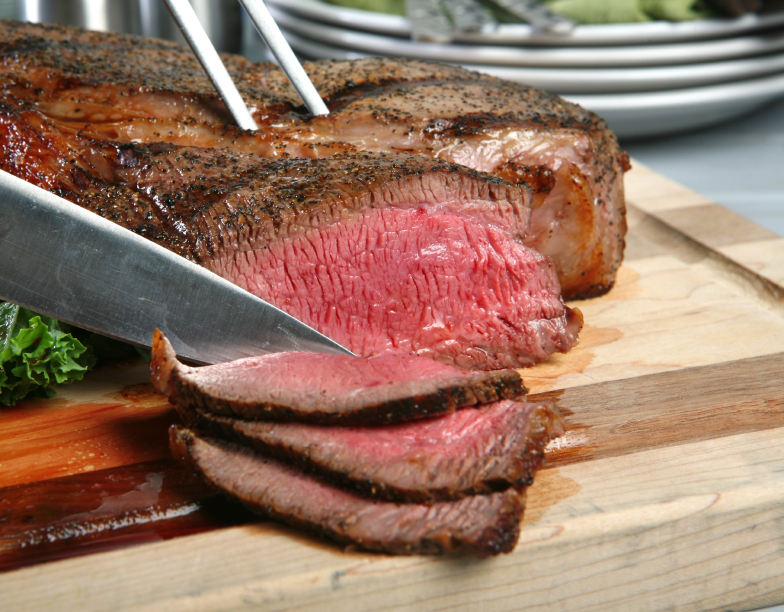A new ozone marinade kills pathogens on meat and food contact surfaces, according to research from the ARS Meat Safety and Quality research Unit. Microbiologists Mick Bosilevac and Nor Kalchayanand, along with food technologist Tommy Wheeler, conducted the research about spraying beef and pork carcasses with an ozone solution.

The “marinade” is applied at meat processing plants. Bosilevac said in a statement, “This project was part of a large farm-to-fork project that focused on cattle and swine, following them through harvest and concluding with finished beef and pork products ready for consumers. During harvest we improved on many processes to help reduce contamination.”
Beef and pork are often contaminated with pathogens that include E. coli, Listeria monocytogenes, and Salmonella. Salmonella along causes 1.35 million infections among Americans every year, and E. coli causes more than 265,000 illnesses. All together, foodborne illness costs the country more than $15.6 billion a year in medical cost and lost productivity.
Ozone has antibacterial properties. It a kill about 90% of bacteria on the surface of meat and leaves no chemical residues. And after it kills pathogens, it breaks down into harmless oxygen and water.
The researchers made “aqueous ozone” by creating nano bubbles in water. These bubbles are 2,500 times smaller than a grain of salt, so they can get into crevices in the meat.
This technology is not only used on whole cuts of meat, but it can be used on meat trimmings, which are used to make ground beef and sausage, which are even more problematic for foodborne illness. The nanobubbles can also be used to sanitize equipment, decontaminate food-contact surfaces, and decrease pesticide levels on produce.
Kalchayanard said in a statement, “Ozone intervention can be integrated in meat processing plants at the proper stages during harvesting. This way processors can more easily implement the new treatment (ozone) without having to reengineer portions of their facilities.”




